“This is holy eve,” Richard Coulter wrote in his journal on October 31st, 1847. He was serving in the American Army that Halloween due to the Mexican War, and he noted the differences between how the day was observed in Mexico and back home in Greensburg, Pennsylvania. “There have been some religious ceremonies in churches today; no other celebrations of holy eve; no demolishing of cabbage as in our country.” While we at the Clements Library will not be participating in any destruction of cabbages, a tradition harkening back to Ireland and Scotland, we can note the day by highlighting some items in our collections instead, including the transcript of Coulter’s journal found in our Manuscripts Division.
We also have a nice selection of items relating to the growing interest in spirits during the 1860s. The traumatic losses suffered during the Civil War heightened the emotional resonance of connecting to the realm of the dead. With the rise of new technologies, photographers proclaimed themselves able to capture images of ghosts that accompanied their customers into the studio. We have a smattering of such spirit photographs in our Cartes de Visite collection.
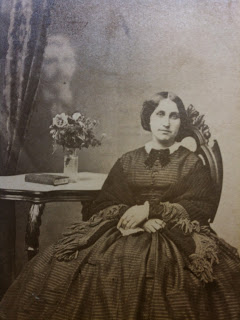 |
| Mrs. H.F. Stuart. “Woman at table with male spirit.” Carte de visite photograph, ca. 1865. |
Along with the full-hearted belief in ghosts, however, also came a pretty healthy skepticism. The wonderful holdings in our Book Division help us see both sides of this nineteenth-century cultural debate. Spectropia; or, Surprising Spectral Illusions showing Ghosts Everywhere, and of any Colour tried to explain that “no so-called ghost has ever appeared, without its being referable either to mental or physiological deception.” To illustrate this, the book provided eerie pictures, which, if stared at long enough, would leave ghostly images in your vision when you looked away.
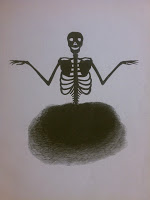 |
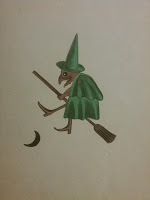 |
| Spectropia; or, Surprising Spectral Illusion showing Ghosts Everywhere, and of any Colour. With Sixteen Illustrations, (New York: James G. Gregory, 1864) |
The William L. Clements Library’s collections also yield up gems more in line with Halloween’s lighter side. We have some friendly skeletons in our Graphics Division’s photo album collections.
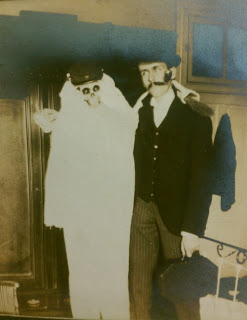 |
| Image from Eastern Shore Photo Album, ca. 1900 |
And while not as exciting as the “demolishing of cabbage[s],” we do have a jack-o-lantern or two… with or without Theodore Roosevelt’s likeness.
 |
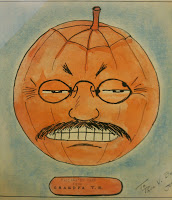 |
| Image from West Michigan Family Album, David V. Tinder Collection of Michigan Photography | James M. Reilly. “Halloween Card from Grandpa T.R.” Ink drawing with watercolor, ca. 1909, Prints– American Satire. |
